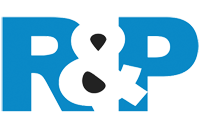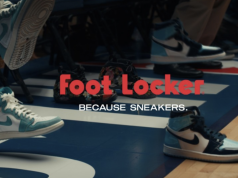This report provides the last five years revenues and revenue growth of Estee Lauder Companies Inc (EL) from 2012 to 2016. Estee Lauder generated a total of $11.3 billion revenues during 2016. Estee Lauder reported a revenue growth of 4.5% year-over-year during 2016. The revenues and the revenue growth correspond to the fiscal year ending in June.
ESTEE LAUDER REVENUES FROM 2012 TO 2016
Here are the revenues and the revenue growth details of Estee Lauder during the last five years:
- Estee Lauder generated a total of $9.7 billion revenues during 2012. Estee Lauder reported a revenue growth of 10.3% year-over-year during 2012.
- Estee Lauder generated a total of $10.2 billion revenues during 2013. Estee Lauder reported a revenue growth of 4.8% year-over-year during 2013.
- Estee Lauder generated a total of $11 billion revenues during 2014. Estee Lauder reported a revenue growth of 7.7% year-over-year during 2014.
- Estee Lauder generated a total of $10.8 billion revenues during 2015. Estee Lauder reported a revenue growth of -1.7% year-over-year during 2015.
- Estee Lauder generated a total of $11.3 billion revenues during 2016. Estee Lauder reported a revenue growth of 4.5% year-over-year during 2016.
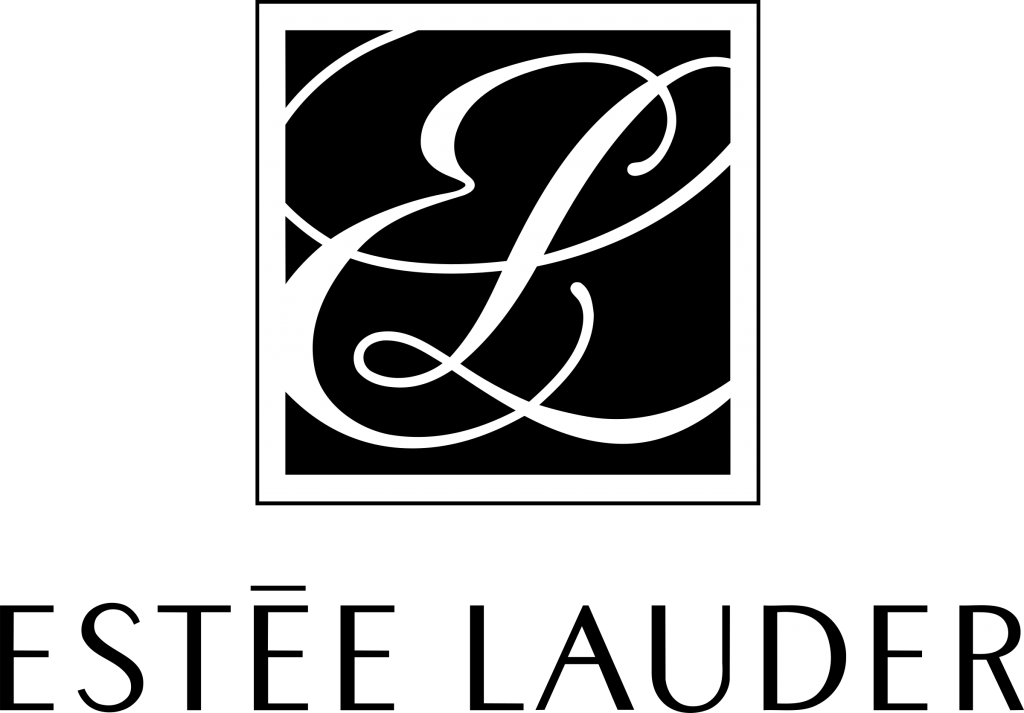
WHY ANALYZE REVENUE GROWTH?
Revenue growth is the most commonly analyzed financial metric. Revenue Growth is the percent increase (or decrease) of a company’s revenue between two time periods. It is computed by using the following formula: ((revenues during the time period two – revenues during the time period one) / revenues during the time period one)*100. If the time periods are two consecutive years, then the revenue growth is referred to as the annual revenue growth year-over-year. If the time periods are two consecutive quarters, then the revenue growth is referred to as the quarterly revenue growth quarter-over-quarter. If the time periods refer to the same quarter in the two consecutive years, then the revenue growth is referred to as quarterly revenue growth year-over-year. In case the time periods are two non-consecutive years, then the revenue CAGR (Commutative Annual Growth Rate) is computed.
Revenue growth analysis is important for a number of reasons. First, it helps in understanding how a business is performing. If the revenue growth rates are positive, it means the business is performing well and the revenues are increasing. If the revenue growth rates are negative, it means the revenues are declining and the company needs to take measures to increase them. If they don’t, the company will continue to shrink. Second, a company’s historical revenue growth analysis along with the market size and market share analysis helps in forecasting the future revenues of a company. Third, a comparison of a company’s growth rates with its competitors helps in determining who is winning more business. A revenue growth higher than the industry average translates into increasing market share. Companies with very high revenue growth rates have the potential to be the industry disrupters.
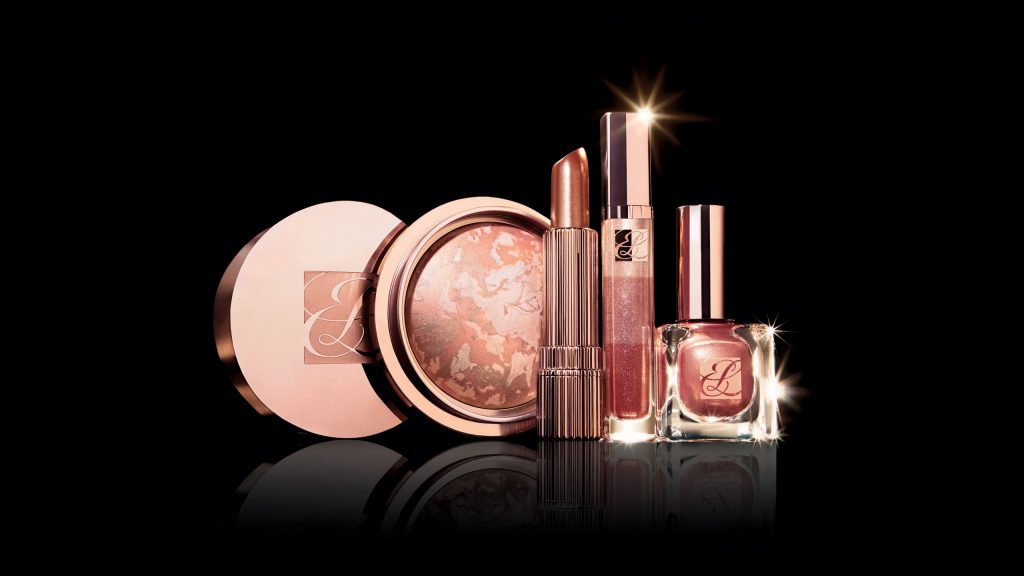
ESTEE LAUDER RANKING
With $11.3 billion revenues, Estee Lauder ranked number 257 in the R&P; Research list of top-3000 public companies in the US by revenues during 2016. Each one of the top-3000 companies generated more than $50 million of annual revenues during 2016.
The top-20 companies in the US by revenues during 2016 were:
- Walmart ($482.1 billion)
- ExxonMobil ($226.1 billion)
- Berkshire Hathaway ($223.6 billion)
- Apple ($215.6 billion)
- McKesson ($190.9 billion)
- UnitedHealth Group ($184.8 billion)
- CVS Health ($177.5 billion)
- General Motors ($166.4 billion)
- AT&T; ($163.8 billion)
- Ford Motor ($151.8 billion)
- AmerisourceBergen ($146.8 billion)
- Amazon ($136 billion)
- Verizon ($126 billion)
- General Electric ($123.7 billion)
- Cardinal Health ($121.5 billion)
- Costco ($118.7 billion)
- Walgreens Boots Alliance ($117.4 billion)
- Chevron ($114.5 billion)
- Kroger ($109.8 billion)
- Express Scripts Holding ($100.3 billion)
For the purpose of performance benchmarking of a company with a sector or industry average, R&P; Research associates every company with one sector and one industry. An industry consists of companies with related/similar business models. A sector comprises of a group of related/similar industries. For example, Life Sciences sector is comprised of following industries: Pharmaceuticals; Medical Devices; Biotechnology; Diagnostics & Scientific Instruments.
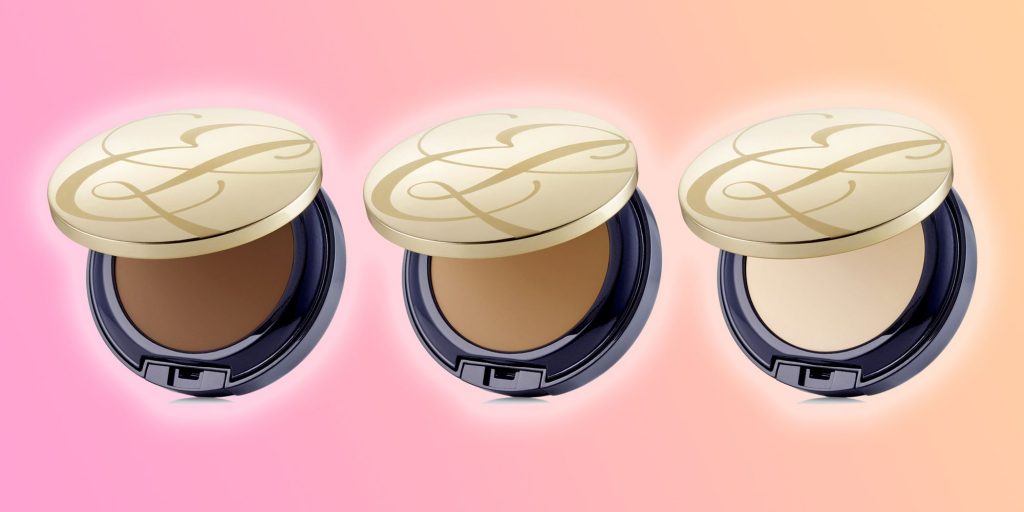
Estee Lauder is associated with Consumer Goods Sector and Personal Goods Industry.
With $11.3 billion revenues, Estee Lauder ranked number 28 of all the companies in the US Consumer Goods sector. There were a total of 207 public companies in the US Consumer Goods sector that had revenues greater than $50 million during 2016.
The top-10 companies in the US Consumer Goods sector by revenues during 2016 were:
- Philip Morris International ($75 billion)
- P&G; ($65.3 billion)
- PepsiCo ($62.8 billion)
- Archer Daniels Midland ($62.3 billion)
- Sysco ($50.4 billion)
- Bunge ($42.7 billion)
- Coca-Cola ($41.9 billion)
- Tyson Foods ($36.9 billion)
- Nike ($32.4 billion)
- Kraft Heinz ($26.5 billion)
Consumer Goods sector is comprised of the following industries: Beverages; Personal Goods; Food Products; Diversified Food; Household Goods & Home Construction; Food Distribution; Toys and Games. The definitions for each of the industries is as follows:
- Beverages industry consists of: Brewing Companies – manufacturers of cider or malt products; Distillers and Vintners Companies and Soft Drinks Companies – manufacturers, bottlers and distributors of nonalc*holic beverages, such as soda, fruit juices, tea, coffee and bottled water.
- Personal Goods industry includes: Clothing & Accessories Companies – manufacturers and distributors of all types of clothing, jewellery, watches or textiles, sportswear, sunglasses, eyeglass frames, leather clothing and goods, and processors of hides and skins; Footwear Companies – manufacturers and distributors of shoes, boots, sandals, sneakers and other types of footwear; and Consumer Packaged Goods Companies – makers and distributors of cosmetics, toiletries and personal-care and hygiene products, including deodorants, soaps, toothpaste, perfumes, diapers, shampoos, razors and feminine hygiene products.
- Food Products industry includes: Farming & Fishing companies – companies that grow crops or raise livestock, operate sherries or own non-tobacco plantation; Food Products Companies – food producers, including meatpacking, snacks, fruits, vegetables, dairy products and frozen seafood. It also includes producers of pet food and manufacturers of dietary supplements, vitamins and related items.
- Diversified Food industry includes companies that offer a diverse portfolio of food products across agricultural, animal and dairy product categories.
- Household Goods & Home Construction industry includes companies that offer: Durable Household Products – Manufacturers and distributors of domestic appliances, lighting, hand tools and power tools, hardware, cutlery, tableware, garden equipment, luggage, towels and linens; Nondurable Household Products – Producers and distributors of pens, paper goods, batteries, light bulbs, tissues, toilet paper and cleaning products such as soaps and polishes; Furnishings – Manufacturers and distributors of furniture, including chairs, tables, desks, carpeting, wallpaper and office furniture; Home Construction – constructors of residential homes, including manufacturers of mobile and prefabricated homes intended for use in one place.
- Food Distribution industry includes companies that distribute food, beverage and consumer goods to restaurants, healthcare, educational facilities, lodging establishments; equipment and supplies for the foodservice and hospitality industries.
- Toys and Games industry consists of manufacturers and distributors of toys and video/computer games, including such toys and games as playing cards, board games, stuffed animals and dolls.
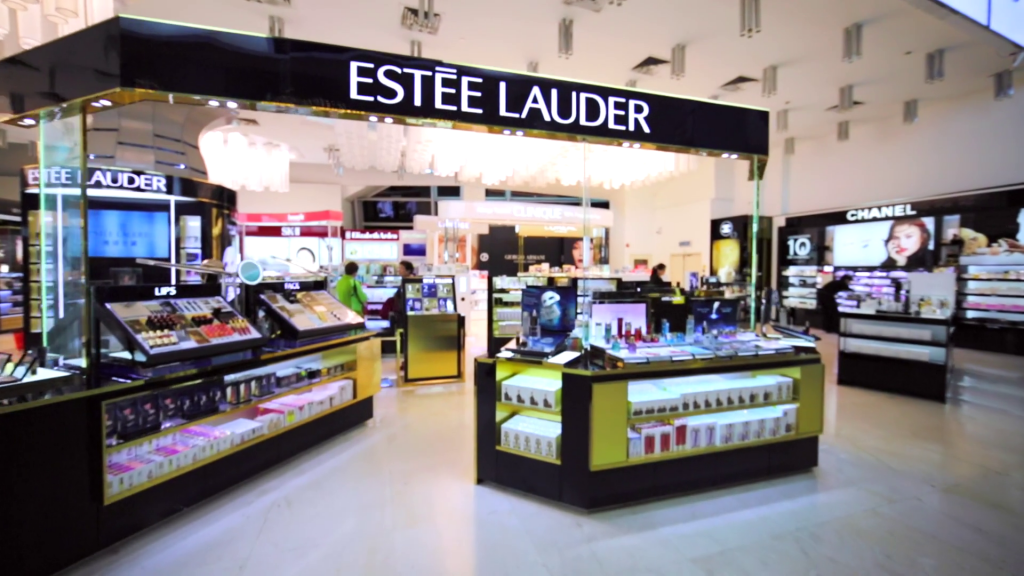
With $11.3 billion revenues, Estee Lauder ranked number 6 of all the companies in the US Personal Goods industry. There were a total of 52 public companies in the US Personal Goods industry that had revenues greater than $50 million during 2016.
The top-10 companies in the US Personal Goods industry by revenues during 2016 were:
- P&G; ($65.3 billion)
- Nike ($32.4 billion)
- Kimberly Clark ($18.2 billion)
- Colgate Palmolive ($15.2 billion)
- VF ($12 billion)
- Estee Lauder ($11.3 billion)
- PVH ($8 billion)
- Foot Locker ($7.4 billion)
- Ralph Lauren ($7.4 billion)
- Signet Jewelers ($6.6 billion)
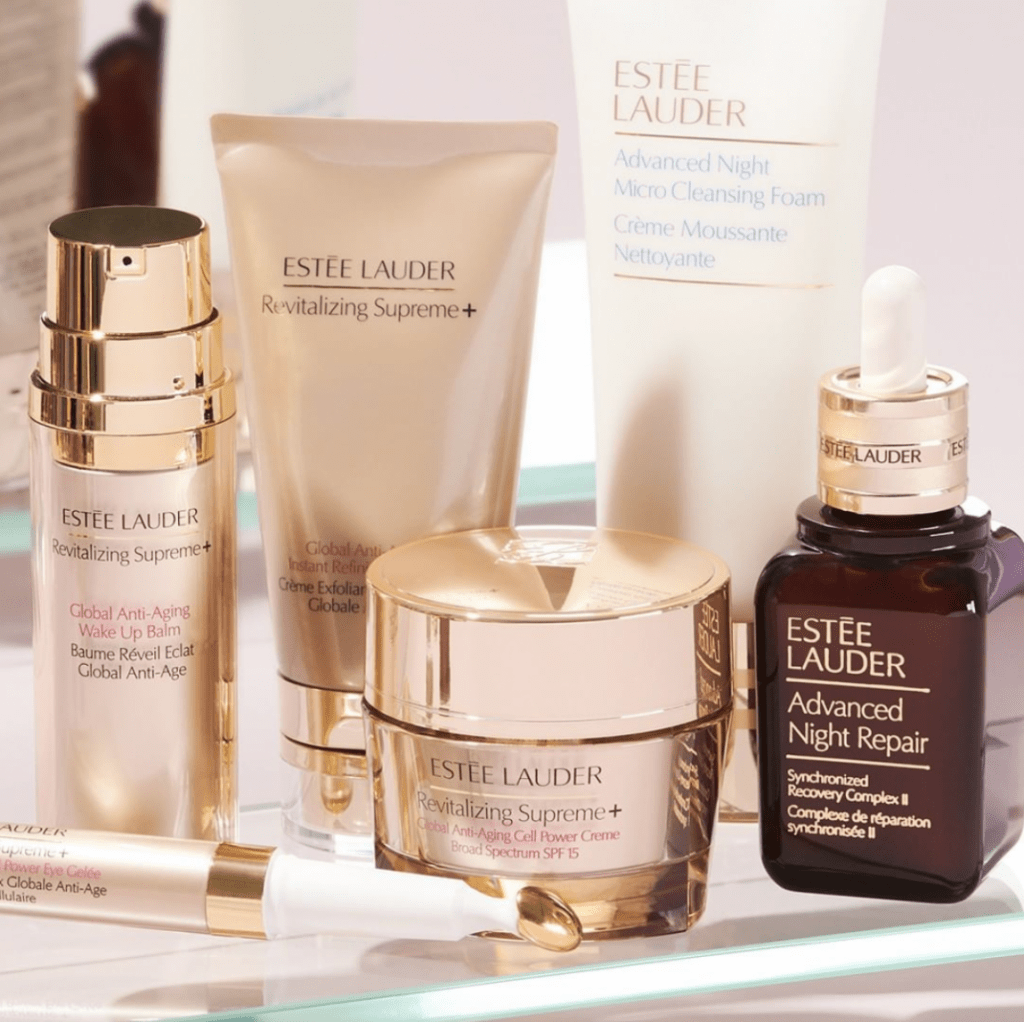
COMPANIES SEGMENTATION
To identify and analyze high/low growth or most/least profitable similar-size companies in different sectors or industries, R&P; research classifies all companies into different segments based upon their revenues, revenue growth, and net profit margins.
Based upon their annual revenues, the companies are classified into one of the following four segments:
- Mega companies, having revenues greater than $50 billion.
- Very Large companies, having revenues between $10 billion and $50 billion.
- Large companies, having revenues between $1 billion and $10 billion.
- Mid-size companies, having revenues between $50 million and $1 billion.
With $11.3 billion revenues, Estee Lauder was in the Very Large companies revenue segment during 2016. There were a total of 239 companies in the Very Large companies revenue segment during 2016.
Based upon their annual revenue growth, the companies are classified into one of the following eight segments:
- Very High positive growth companies, having annual revenue growth greater than 50%.
- High positive growth companies, having annual revenue growth between 20% and 50%.
- Medium positive growth companies, having annual revenue growth between 5% and 20%.
- Low positive growth companies, having annual revenue growth between 0% and 5%.
- Low negative growth companies, having annual revenue growth between -5% and 0%.
- Medium negative growth companies, having annual revenue growth between -20% and -5%.
- High negative growth companies, having annual revenue growth between -50% and -20%.
- Very High negative growth companies, having annual revenue growth less than -50%.
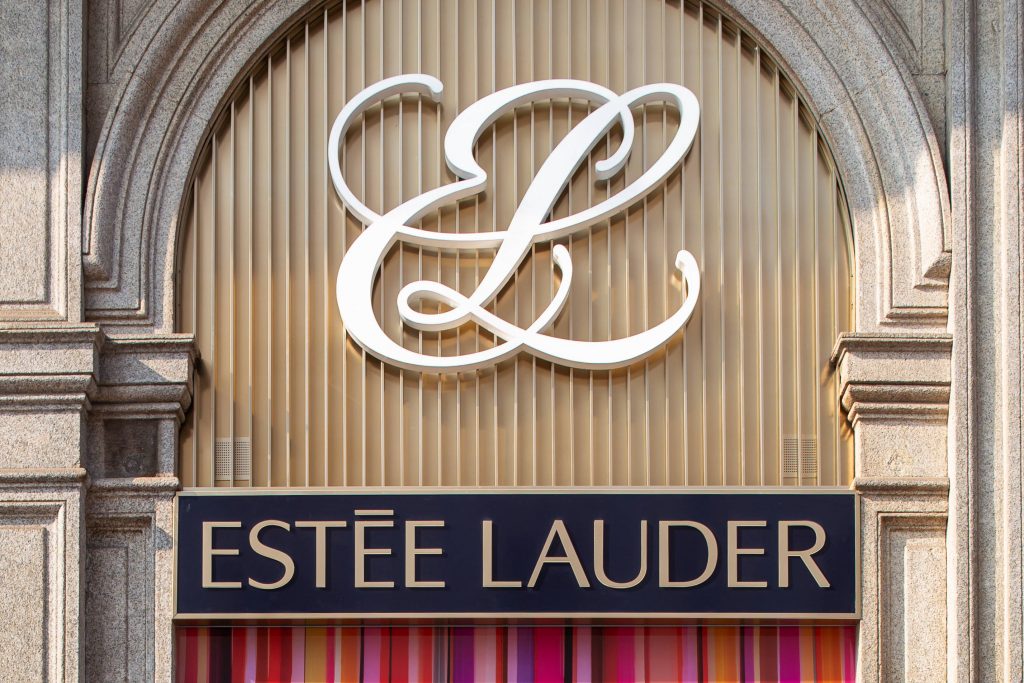
With 4.5% revenue growth year-over-year, Estee Lauder was in the Low positive revenue growth segment during 2016. There were a total of 593 companies in the Low positive revenue growth segment during 2016. Of the US top-3000 companies, 1985 (nearly two-third of the total) had positive revenue growth and 1015 (nearly one-third of the total) had negative revenue growth during 2016.
Based upon their annual net profit margin, the companies are classified into one of the following eight segments:
- Very High positive margin companies, having net profit margin greater than 50%.
- High positive margin companies, having net profit margin between 20% and 50%.
- Medium positive margin companies, having net profit margin between 5% and 20%.
- Low positive margin companies, having net profit margin between 0% and 5%.
- Low negative margin companies, having net profit margin between -5% and 0%.
- Medium negative margin companies, having net profit margin between -20% and -5%.
- High negative margin companies, having net profit margin between -50% and -20%.
- Very High negative margin companies, having net profit margin less than -50%.
With a net margin of 9.9%, Estee Lauder was in the Medium positive net profit margin segment during 2016. There were a total of 1086 companies in the Medium positive net profit margin segment during 2016. Of the US top-3000 companies, 2244 (nearly three-fourth of the total) had positive net profit margin and 756 (nearly one-fourth of the total) had negative net profit margin during 2016.
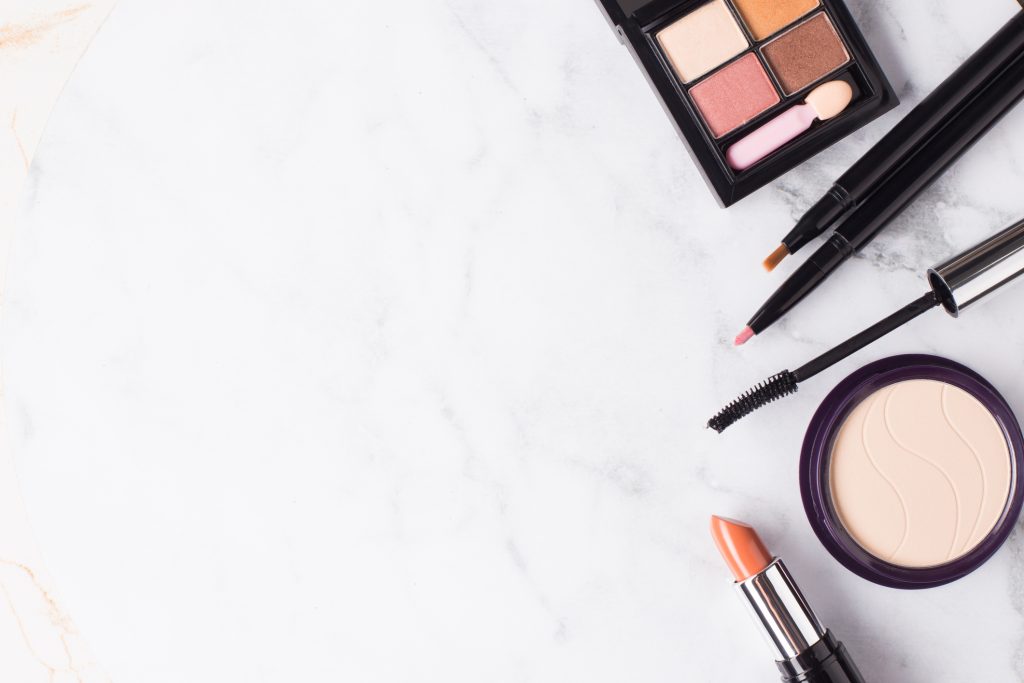
COMPANY BUSINESS SUMMARY
The Estee Lauder Companies Inc. manufactures and markets skin care, makeup, fragrance, and hair care products worldwide. The company offers a range of skin care products, such as moisturizers, serums, cleansers, toners, body care, exfoliators, acne and oil correctors, facial masks, cleansing devices, and sun care products; and makeup products for face, eyes, lips, and nails, as well as related items, including compacts, brushes, and other makeup tools. It also provides fragrance products in various forms comprising eau de parfum sprays and colognes, lotions, powders, creams, bath/shower products, candles, and soaps; and hair care products consisting of shampoos, conditioners, styling products, treatment, finishing sprays, and hair color products, as well as sells ancillary products and services. The company offers its products under the brands of Estee Lauder, Aramis, Clinique, Prescriptives, Lab Series, Origins, MAC, Bobbi Brown, La Mer, Aveda, Jo Malone London, Bumble and bumble, Darphin, Ojon, Smashbox, RODIN olio lusso, Le Labo, Editions de Parfums Frederic Malle, GLAMGLOW, By Kilian, BECCA, Too Faced, GoodSkin Labs, and Osiao. In addition, it operates as a licensee for fragrances and/or cosmetics sold under the Tommy Hilfiger, Donna Karan New York, DKNY, Kiton, Michael Kors, Tom Ford, Dr. Andrew Weil, Ermenegildo Zegna, AERIN, and Tory Burch brand names. The company sells its products through department stores, specialty multi-brand retailers, upscale perfumeries, pharmacies, and salons and spas; freestanding stores; e-commerce Websites; stores in airports and on cruise ships; in-flight and duty-free shops; and self-select outlets. The Estee Lauder Companies Inc. was founded in 1946 and is based in New York, New York.
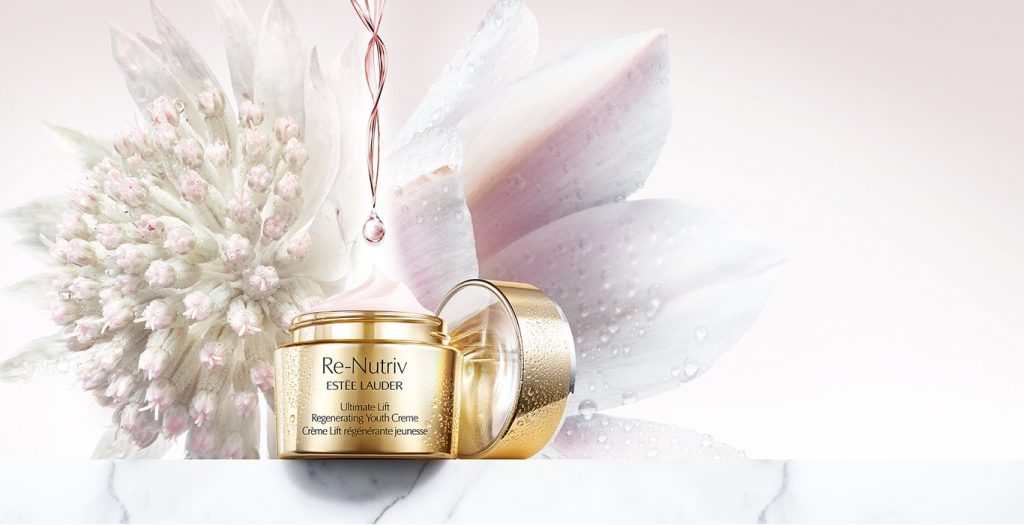
DATA SOURCE
The chart and the data on this page are sourced from the R&P; Research Industry Intelligence Platform. The platform provides the key financial metrics for all the public companies in the United States. The platform empowers users to compare last five or 15 years financial data of a company with the other companies or the industry averages. This benchmarking exercise yields powerful insights that can drive better business decisions.
INDUSTRY PEERS AND COMPETITORS OF ESTEE LAUDER
Kimberly Clark (KMB) Business Analysis – Analyze Historical Performance, Strategic Priorities,…
Kimberly Clark Corp with $18 billion revenues in the year 2016 was the number 3 Personal Goods company. Read this report to know the top competitors of Kimberly Clark and identify growth and cost optimization opportunities of Kimberly Clark
Colgate Palmolive (CL) Business Analysis – Analyze Historical Performance, Strategic Priorities,…
Colgate Palmolive Co with $15 billion revenues in the year 2016 was the number 4 Personal Goods company. Read this report to know the top competitors of Colgate Palmolive and identify growth and cost optimization opportunities of Colgate Palmolive
VF (VFC) Business Analysis – Analyze Historical Performance, Strategic Priorities, And…
V F Corp with $12 billion revenues in the year 2016 was the number 5 Personal Goods company. Read this report to know the top competitors of VF and identify growth and cost optimization opportunities of VF
PVH (PVH) Business Analysis – Analyze Historical Performance, Strategic Priorities, And…
PVH Corp. with $8 billion revenues in the year 2016 was the number 7 Personal Goods company. Read this report to know the top competitors of PVH and identify growth and cost optimization opportunities of PVH
Foot Locker (FL) Business Analysis – Analyze Historical Performance, Strategic Priorities,…
Foot Locker, Inc. with $7 billion revenues in the year 2016 was the number 8 Personal Goods company. Read this report to know the top competitors of Foot Locker and identify growth and cost optimization opportunities of Foot Locker
Ralph Lauren (RL) Business Analysis – Analyze Historical Performance, Strategic Priorities,…
Ralph Lauren Corp with $7 billion revenues in the year 2016 was the number 9 Personal Goods company. Read this report to know the top competitors of Ralph Lauren and identify growth and cost optimization opportunities of Ralph Lauren
REVENUES ANALYSIS
Estee Lauder (EL) Revenues And Revenue Growth From 2012 To 2016
This report provides the last five years revenues and revenue growth of Estee Lauder Companies Inc (EL) from 2012 to 2016. Estee Lauder generated a total of $11.3 billion revenues during 2016. Estee Lauder reported a revenue growth of 4.5% year-over-year during 2016. The revenues and the revenue growth correspond to the fiscal year ending in June.
Estee Lauder (EL) Revenues And Revenue Growth From 2002 To 2016
This report provides the last fifteen years revenues and revenue growth of Estee Lauder Companies Inc (EL) from 2002 to 2016. Estee Lauder generated a total of $11.3 billion revenues during 2016. Estee Lauder reported a revenue growth of 4.5% year-over-year during 2016. The revenues and the revenue growth correspond to the fiscal year ending in June.
Estee Lauder (EL) Revenue Growth Comparison With Industry Growth From 2012…
This report provides a comparison of Estee Lauder Companies Inc (EL) revenue growth with Personal Goods industry growth during the last five years from 2012 to 2016. Estee Lauder reported a revenue growth of 4.5% year-over-year during 2016. The Personal Goods industry growth was -0.4% year-over-year during 2016. Estee Lauder growth was faster than the industry during 2016.
PROFIT ANALYSIS
Estee Lauder (EL) Net Profit And Net Margin From 2012 To…
This report provides the last five years net profit and net margin of Estee Lauder Companies Inc (EL) from 2012 to 2016. Estee Lauder reported a total net income of $1.1 billion during 2016. Estee Lauder generated a total of $11.3 billion revenues during 2016. Estee Lauder net profit margin was 9.9% during 2016. The net profit and the net profit margin correspond to the fiscal year ending in June.
Estee Lauder (EL) Net Profit And Net Margin From 2002 To…
This report provides the last fifteen years net profit and net margin of Estee Lauder Companies Inc (EL) from 2002 to 2016. Estee Lauder reported a total net income of $1.1 billion during 2016. Estee Lauder generated a total of $11.3 billion revenues during 2016. Estee Lauder net profit margin was 9.9% during 2016. The net profit and the net profit margin correspond to the fiscal year ending in June.
Estee Lauder (EL) Net Profit Margin Comparison With Industry From 2012…
This report provides a comparison of Estee Lauder Companies Inc (EL) net profit margin with Personal Goods industry net profit margin during the last five years from 2012 to 2016. Estee Lauder reported a net profit margin of 9.9% during 2016. The Personal Goods industry net profit margin was 10.5% during 2016. Estee Lauder was less profitable than the industry during 2016.
COST EXPENSES ANALYSIS
Estee Lauder (EL) Cost of Sales (COGS) Analysis From 2012 To…
This report provides the last five years cost of sales (COGS) analysis of Estee Lauder Companies Inc (EL) from 2012 to 2016. Estee Lauder spent a total of $2.2 billion on COGS during 2016. Estee Lauder generated a total of $11.3 billion revenues during 2016. As a percentage of revenues, Estee Lauder spent 19.4% of its total revenues on COGS during 2016. The cost of sales (COGS) numbers are for the fiscal year ending in June.
Estee Lauder (EL) Research & Development (R&D) Spending Analysis 2016
R&D; spending analysis for Estee Lauder is not available because either the company does not provide the data or we don’t have it.
Estee Lauder (EL) Sales, Marketing, General & Administrative (SG&A) Spending Analysis…
This report provides the last five years sales, marketing, general & administrative (SG&A;) expenses of Estee Lauder Companies Inc (EL) from 2012 to 2016. Estee Lauder spent a total of $7.3 billion on sales, marketing, general, and administrative (SG&A;) activities during 2016. Estee Lauder generated a total of $11.3 billion revenues during 2016. As a percentage of revenues, Estee Lauder spent 65.2% of its total revenues on SG&A; activities during 2016. The SG&A; spending numbers are for the fiscal year ending in June.
WORKING CAPITAL ANALYSIS
Estee Lauder (EL) Inventory Spending Analysis From 2012 To 2016
This report provides the last five years inventory spending analysis of Estee Lauder Companies Inc (EL) from 2012 to 2016. Estee Lauder invested a total of $1.3 billion on inventories during 2016. Estee Lauder generated a total of $11.3 billion revenues during 2016. As a percentage of revenues, Estee Lauder invested 11.2% of its total revenues on inventories during 2016. The inventory numbers are for the fiscal year ending in June.
Estee Lauder (EL) Accounts Receivable (A/R) Analysis From 2012 To 2016
This report provides the last five years Accounts Receivable (A/R) analysis of Estee Lauder Companies Inc (EL) from 2012 to 2016. Estee Lauder invested a total of $1.3 billion on accounts receivable during 2016. Estee Lauder generated a total of $11.3 billion revenues during 2016. As a percentage of revenues, Estee Lauder invested 11.2% of its total revenues on accounts receivable during 2016. The accounts receivable numbers are for the fiscal year ending in June.
Estee Lauder (EL) Accounts Payable (A/P) Analysis From 2012 To 2016
This report provides the last five years Accounts Payable (A/P) analysis of Estee Lauder Companies Inc (EL) from 2012 to 2016. Estee Lauder invested a total of $717 million on accounts payable during 2016. Estee Lauder generated a total of $11.3 billion revenues during 2016. As a percentage of revenues, Estee Lauder invested 6.4% of its total revenues on accounts payable activities during 2016. The accounts payable numbers are for the fiscal year ending in June.
ASSET MANAGEMENT ANALYSIS
Estee Lauder (EL) Property, Plant & Equipment (PP&E) Investment Analysis From…
This report provides the last five years property, plant & equipment (PP&E;) investment analysis of Estee Lauder Companies Inc (EL) from 2012 to 2016. Estee Lauder invested a total of $1.6 billion on property, plant & equipment (PP&E;) activities during 2016. Estee Lauder generated a total of $11.3 billion revenues during 2016. As a percentage of revenues, Estee Lauder invested 14.1% of its total revenues on PP&E; activities during 2016. The PP&E; investment numbers are for the fiscal year ending in June.
Estee Lauder (EL) Intangible Assets Analysis From 2012 To 2016
This report provides the last five years Intangible assets analysis of Estee Lauder Companies Inc (EL) from 2012 to 2016. Estee Lauder invested a total of $1.6 billion on Intangible assets during 2016. Estee Lauder generated a total of $11.3 billion revenues during 2016. As a percentage of revenues, Estee Lauder invested 14% of its total revenues on intangible assets during 2016. The Intangible asset numbers are for the fiscal year ending in June.

